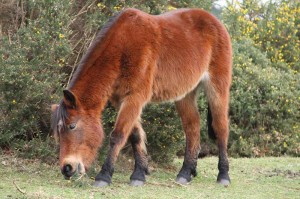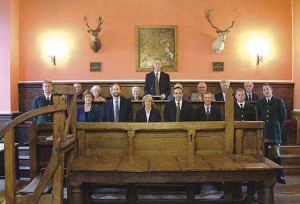Author Archives: New Forest Trust
Welfare
 Welfare of the animals on the Forest is taken very seriously. The Verderers have rules for checking the condition of the animals. If an animal is too thin its owner has to take it off the Forest and feed it up before letting it out again. Animals also have to be taken off the Forest if they are sick or injured.
Welfare of the animals on the Forest is taken very seriously. The Verderers have rules for checking the condition of the animals. If an animal is too thin its owner has to take it off the Forest and feed it up before letting it out again. Animals also have to be taken off the Forest if they are sick or injured.
Twice a year the Verderers organise ‘welfare tours’ where experts from organisations such as the RSPCA and the British Horse Society tour the Forest to inspect the stock. The findings from the tours are reported on the Verderers’ website.
If you see any sick or injured ponies, donkeys, pigs, cows or sheep on the Forest you should get in touch with your Agister (who is the person on the ground responsible for welfare), or call the Verderers’ office on 023 8028 2052. Try to give them really clear information about what the animal looks like, and where it is. Saying that you’ve seen ‘a brown pony in the woods’ isn’t much help when there are hundreds of them!
Verderers
 Verderers are the people who set the Forest byelaws and regulate the use of common rights in the Forest. The name comes from the French word ‘vert’, which means green. There are ten Verderers- half are appointed by the government, and half are elected by people with commoning rights.
Verderers are the people who set the Forest byelaws and regulate the use of common rights in the Forest. The name comes from the French word ‘vert’, which means green. There are ten Verderers- half are appointed by the government, and half are elected by people with commoning rights.
The five elected Verderers serve six year terms. The elections are staggered; two places will be up for the vote at one election, and three at the next, the elections being held three years apart.
In law, the Verderers have a similar status to magistrates. The ‘Verderers Court’ meets every month, except in August, at The Queen’s House in Lyndhust. The public can attend, and can raise issues for the Verderers to consider- that’s known as ‘making a presentment’ to the Court.
The Verderers set the marking fees, which are part of their byelaws. Verderers also have the power to block certain types of planning applications on Crown lands within the Forest. The Verderers have often acted as guardians of the Forest, protecting it from outside pressures.
The chairman of the Verderers is known as ‘The Official Verderer’, and is appointed by Her Majesty the Queen.
Unsafe driving
Unsafe driving causes accidents. Don’t forget that the animals have right of way on the Forest roads. The number of animal accidents in the Forest tends to get worse in the winter when there are more people driving in the dark. At night, unless you are driving slowly, it can be really hard to see animals in the road until you are too close to them to stop, so you must keep your speed down. If you are blinded by lights from oncoming cars slow right down to well under 20 mph.
Turbary
Turbary is the common right to cut turf for fuel. Turf isn’t much used now, but there are still commoners who remember collecting it. The turf was cut into small slabs, and pairs of slabs would be stood up- one leaning against the other- so that air could pass between them and help them to dry out.
There were special rules about how and where the turf could be cut, which were to prevent the land from being completely stripped bare. A commoner wanting turf would have to apply to the local keeper for permission, and would get a ‘ticket’ to cut turf from a particular part of the Forest. The Verderers (see V) could set charges for turf cutting. Under the New Forest Act of 1877, the maximum charge was sixpence for every thousand turves.
Stock
Stock means the animals that commoners turn out on the Forest. The number of animals varies from year to year, but nowadays averages around 7,000. More than half of the animals are ponies, and about a third are cattle. Most of the rest are pigs, with just a hundred or so donkeys and sheep.

